In 2025, seeking certainty amidst uncertainty! A direct look at the "China answers" from global medical device giants' CEOs.

From March 23 to 24, the 2025 China Development Forum, hosted by the Development Research Center of the State Council, was held in Beijing. This year's forum focused on the theme "Fully Releasing Development Momentum and Jointly Promoting Stable Global Economic Growth," concentrating on cutting-edge topics such as macroeconomic policy, artificial intelligence, and green development, aiming to promote win-win cooperation between China and the world.
Currently, the international order is undergoing deep adjustments, and geopolitical competition is intensifying; unilateralism and protectionism are rampant, and the risks of climate change are rising; the impact of non-economic factors on the economy is expanding, and global economic uncertainty is increasing.
As the world's second-largest economy, China accounts for one-third of global manufacturing. Currently, China is experiencing a critical phase with a per capita GDP exceeding $10,000, where consumption upgrades, urbanization, digitalization, and green transformation constitute the total demand potential. To unleash growth momentum, it is necessary to rely on technological innovation (such as AI), institutional openness, and global cooperation.
In the context of increasing uncertainty in the global economy, how should multinational companies collaborate with China?
At this year's forum, leading global companies in the health industry from sub-sectors such as pharmaceuticals and medical devices have shared their insights.
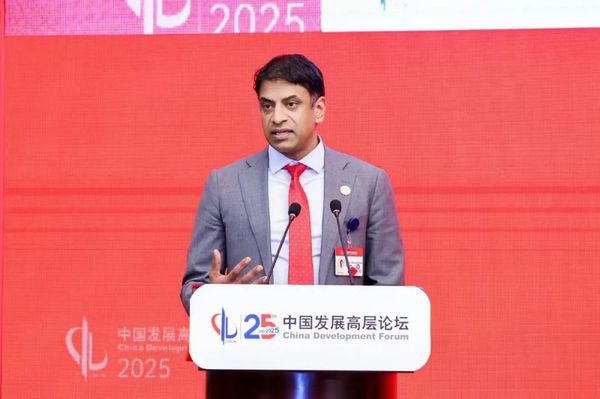
Wan Sihan
CEO of Novartis
China has made significant progress in innovation within the big health industry and is expected to become a leader in global big health industry innovation in the future.
First, in recent years, China has made significant progress in intellectual property protection in the pharmaceutical industry, particularly in areas such as patent linkage, data protection, and protection of trial data. China has become a country capable of leading the world in these aspects. Second, by implementing relevant laws and policies for intellectual property protection, more innovative medical technologies and pharmaceuticals can be attracted to enter the Chinese market at an earlier stage, benefiting a larger number of people.
Regarding collaboration, Novartis has built an extensive global cooperation network in the field of radiopharmaceuticals. In addition to establishing partnerships with the United States, Europe, and Japan to better integrate the global supply chain, Novartis has also formed deep cooperative relationships with Chinese pharmaceutical companies. The inclusion of China enhances the resilience of Novartis's supply chain management.
In recent years, the Chinese market has continued to open up, and China's regulatory policies have also been conducive to promoting effective innovation in technology and pharmaceuticals. For example, the approval process for radiopharmaceuticals in China has gradually accelerated, which will help establish a more efficient pharmaceutical innovation ecosystem. Novartis places great importance on China's regulatory policies in the biopharmaceutical field and will actively integrate into China's pharmaceutical innovation ecosystem, allowing better drugs to enter the Chinese market more quickly, thereby benefiting more people in China. Similarly, China's large population size also provides sufficient clinical case study analysis samples for the relevant pharmaceutical innovation system.
I am optimistic about the future development of China's health industry, and I also hope that Novartis can establish more and better collaborations with China to achieve the long-term vision and development goals mentioned in the Healthy China strategy.

Suboco
AstraZeneca Global CEO
AstraZeneca's recently announced $2.5 billion investment plan in China will establish its second global strategic R&D center in the country, and the sixth globally. This means that AstraZeneca will have the same number of global strategic R&D centers in China as in the United States and Europe. The new center will help AstraZeneca build closer partnerships with the best talents in Beijing, promote the development of discovery, development, and artificial intelligence capabilities, and serve as an important bridge connecting China with the world.
For more than 30 years, AstraZeneca has been an important partner in China's high-quality development. When AstraZeneca arrived in China in 1993, the country was largely a recipient of innovative drugs. Today, China has become a source of scientific discoveries and the world's second-largest country for new drug research and development, particularly driving global change in cutting-edge fields such as cell and gene therapy. The biopharmaceutical industry is crucial to the global public health system.
Currently, China's pharmaceutical innovation environment is more friendly: the review and approval time for new drug clinical trials has been significantly shortened from 501 days in 2015 to 87 days now, and the application of AI technology in drug discovery has significantly improved R&D efficiency. The number of drugs developed by Chinese pharmaceutical companies has doubled in the past four years to 4,400, many of which have the potential to save lives outside of China.
To accelerate the development of drugs in China and bring new medicines to patients worldwide, it is necessary to:
More proactive international regulatory collaboration to facilitate the international recognition of Chinese clinical trial data and regulatory approvals.
A more stable and resilient supply chain to ensure uninterrupted access to medical services for patients.
Continuous trust, openness, and cooperation to safeguard global public health security.
China has transformed from a recipient of pharmaceuticals to an indispensable part of the medical industry, especially in innovative fields such as gene therapy and cell therapy, which have played an increasingly critical role in the Chinese healthcare sector over the past five years. Reform is the fundamental reason for this transformation, and the application of AI technology will further accelerate the pace of innovation.
Looking to the future, the medical field needs to:
Invest in basic science and establish a world-class innovation ecosystem.
Strengthen knowledge data sharing among global academic centers and enterprises, and promote multinational regulatory cooperation and clinical trial collaboration.
Build a stable and resilient supply chain.
Reduce carbon emissions and adhere to sustainable development.
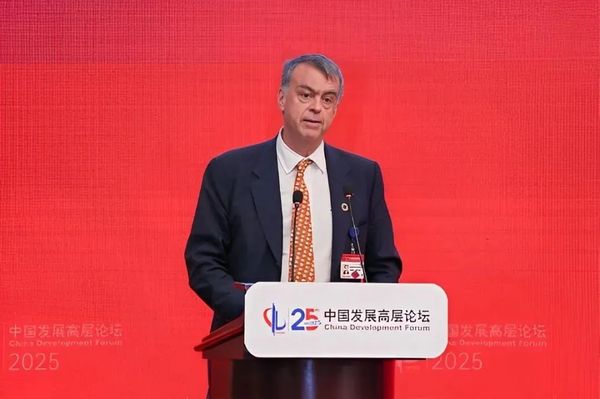
Andrei Hoffman
Roche founding family representative, Vice Chairman of Roche Group Board.
The healthcare industry faces challenges as chronic diseases and an aging population place a significant burden on social and economic development.
To address this challenge, it is necessary to enhance individual health levels on one hand, and on the other hand, to focus on the innovation of biopharmaceuticals to improve the accessibility and affordability of healthcare. Supporting drug innovation through new technologies is also particularly important.
I am encouraged that the Chinese government recognizes the value of the biopharmaceutical industry and has announced strong policies at the national level to support this sector, achieving some significant results. Currently, China's early-stage research results account for one-third of the global drug pipeline, and Chinese biotechnology companies are becoming a significant force in global collaborations.
This will help China better cope with social issues such as the disease burden and population aging, create strong momentum for boosting consumption and other economic activities, and lay a solid foundation for the social welfare of the Chinese people, which is highly aligned with the "Healthy China 2030" goal.
The "Healthy China 2030" goal is a powerful guiding framework with a long-term vision. Health is one of the most important investments made by the government, and investment in health is crucial for building a strong and resilient health system. It can also have broader impacts—not only in treating diseases, improving people's quality of life and longevity, but also in preventing productivity losses, increasing labor participation, and enhancing social welfare.
Many countries face a significant socioeconomic burden from common chronic diseases and infectious diseases. Roche conducted a study on the economic and social burden of diseases in 10 countries, including China, calculating the estimated productivity losses due to disability and death. The study found that the socioeconomic burden of HER2-positive breast cancer is expected to reach nearly $1 trillion between 2024 and 2032. During the same period, the expected burden for diabetic macular edema (DME) and age-related macular degeneration (AMD), two common retinal diseases (especially in the elderly, which may lead to irreversible blindness), is projected to exceed $700 billion.
The biopharmaceutical industry is playing an increasingly important role in helping society address the growing economic burden by fundamentally changing the way diseases are managed, alleviating pressure on healthcare systems, and improving patient outcomes to reduce productivity losses, support economic growth, and create a greater social impact.
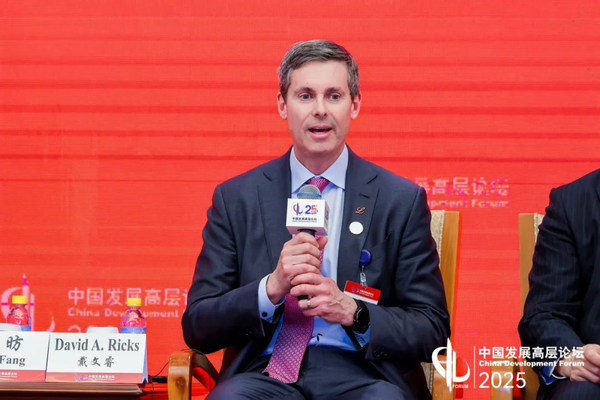
Dai Wenrui
Chairman and CEO of Eli Lilly and Company
The silver economy brings growth opportunities while also presenting significant medical challenges—especially in the field of dementia treatment. Recent research reveals a shocking reality: the fear of memory loss now exceeds the fear of death. If the healthcare system wants to effectively address this issue, it must promote innovations in insurance policies and recognize that dementia is not a single disease, but a complex set of syndromes. Early and accurate diagnosis is the foundation for effective treatment. Only by raising awareness early can we hope to halt the progression of the disease.
Action is urgent. We must deploy scalable dementia treatment solutions in China before the comprehensive impact of demographic changes arrives. Three key steps are crucial: reducing the societal stigma around cognitive decline, enhancing early and accurate diagnosis, and leveraging cutting-edge technology. Eli Lilly has invested over $8 billion in Alzheimer's research over the past 35 years and is committed to bringing innovative therapies to China. Our goal is to support China's healthy aging initiative and drive transformation in the field of dementia treatment.
Recently, we have implemented three major initiatives in China: investing 1.5 billion RMB to expand our production base in Suzhou, launching the Lilly Gateway Labs in Beijing to accelerate local innovation incubation, and establishing the Lilly China Medical Innovation Center in Beijing. The development environment in China aligns closely with our strategy. We embrace these changes and are excited about the innovative ideas emerging here.

Jeff Massa
Chairman and CEO of Medtronic
Medtronic is one of the first multinational medical technology companies to enter China. Its operations in China cover four major medical fields: cardiovascular, surgical and critical care, neuroscience, and diabetes.
In 2025, Medtronic will enter its 36th year of development in China. Currently, Medtronic has established a full value chain layout covering research and development, production, sales, training, after-sales service, and investment funds in cities such as Beijing, Shanghai, Changzhou, and Chengdu.
Relying on a locally integrated value chain layout, Medtronic continues to focus on its medium- to long-term development model in the Chinese market, firmly advancing its localization strategy.
From the perspective of China's demographic structure, the increasing medical needs, and the overall trend of economic development, the potential of China's healthcare market is undoubtedly enormous. We firmly believe that China will become the largest healthcare market in the world and an important source of innovation, while also serving as a strategic hub for medical innovation, investment, and collaboration. We look forward to working with more industry partners to jointly promote the development of new productivity and advance medical innovation to improve patient outcomes.
The China Development Forum serves as an important bridge for the global business community to communicate with Chinese policymakers, which is particularly vital in the current complex and challenging international environment. Promoting cooperation and common progress is key to advancing medical innovation for the benefit of patients around the world, and we hope to make a positive contribution to this end.
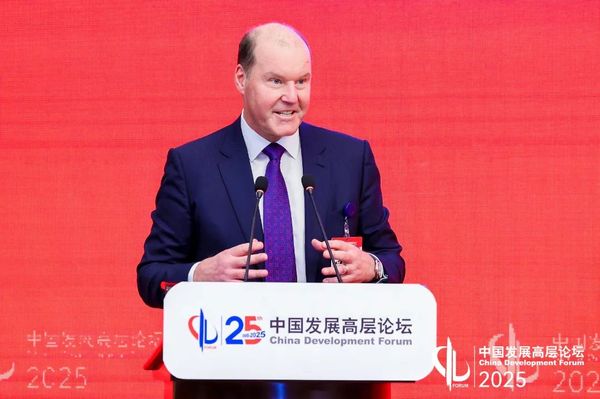
Weiboke
Chairman, President, and Chief Executive Officer of Takeda Pharmaceutical Company
China has become the second-largest pharmaceutical market in the world. With economic development and population growth, the potential demand for healthcare is continuously increasing.
Takeda is vital to China, as it is committed to driving cutting-edge innovation and tirelessly bringing groundbreaking therapies to the Chinese market for the benefit of patients. The Chinese government strongly supports biopharmaceutical innovation and actively promotes the accessibility of global innovative therapies for Chinese patients, which aligns closely with Takeda's strategic priorities and the development of China's health care sector.
The close cooperation among countries in the development of health-related pharmaceuticals is particularly important. China's focus on collaborating with enterprises from other countries in this field will contribute to the faster and better development of the global health industry. Takeda Pharmaceutical also places great importance on cooperation with the Chinese market. Over the past five years, thanks to rapid technological advancements and deepening global cooperation, the innovative drugs launched by Takeda in China have exceeded the total of the previous 25 years. This is partly due to China's vast market size and also benefits from the relevant reform measures implemented by the Chinese government.
The rapid development of new technologies such as AI is driving the transformation of the innovative pharmaceutical industry, enhancing production efficiency, and enabling companies to have greater flexibility and initiative in product pricing in the future, thereby promoting the market competitiveness of innovative drugs.
Takeda Pharmaceutical actively explores and applies AI technology in drug development, promoting the deep integration of digital technology and drug development. At the same time, it typically considers various factors such as the cost of drug innovation and development, technological maturity, and project urgency to decide whether to apply AI drug development technology in a specific project.
In recent years, Takeda Pharmaceutical has actively engaged in molecular research and development to address significant medical needs. Recently, we reached a strategic cooperation agreement with the Chengdu Municipal Government to establish the Takeda China Innovation Center (TCIC). This digital innovation center will expand our digital innovation strategy blueprint, empowering Takeda to better provide high-quality services to patients.
Digital technology will enable significant transformations in the pharmaceutical industry and allow companies like Takeda Pharmaceutical to greatly enhance production efficiency. Takeda will also have greater flexibility in pricing, making medications more affordable.
In terms of development, Takeda Pharmaceutical utilizes big data to test 70% of new molecules' clinical protocols, significantly improving production efficiency and manufacturing progress. New technological methods and ideas provide support for molecular research and development, while enhancing the efficiency and precision of drug development.
China has now become a very important participant and contributor in the pharmaceutical industry. At the same time, China's AI technology has made significant progress, and in this regard, China will also become a global leader. We hope to stand shoulder to shoulder with China and make better contributions in the future.
I hope that China's relevant regulatory policies and processes can be further improved, which will help enhance the efficiency of enterprise R&D systems. Utilizing rapidly advancing AI and big data technologies can better diagnose potential patient populations in advance and improve diagnostic accuracy. In these areas, China, relying on its large population and market, is bound to have significant opportunities.
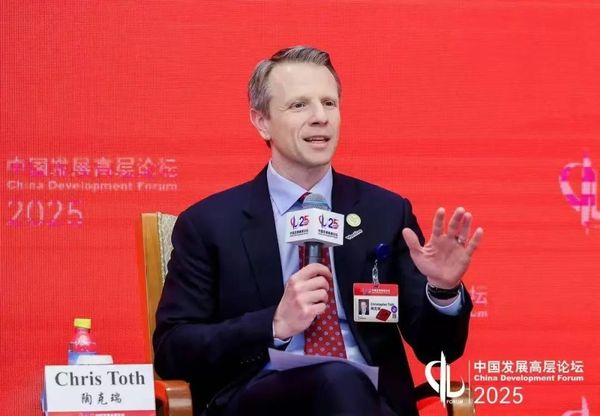
Tao Keli
Global CEO of Wanyite
Aging is a challenge faced by every country, but for China, it presents a unique opportunity to build a more resilient, innovative, and equitable healthcare system.
This trend is irreversible. At the same time, chronic diseases, especially age-related diseases such as chronic kidney disease (CKD), are placing increasing pressure on healthcare systems worldwide. Currently, chronic kidney disease affects nearly 850 million people globally, and it is expected to become the fifth leading cause of death by 2040. In China alone, over 120 million people suffer from chronic kidney disease, but the awareness rate is extremely low, at only 10%. So, how can we effectively address these challenges? The answer lies in rethinking the way healthcare services are delivered.
At Wanyite, we believe that in addressing the healthcare challenges associated with aging, we need not only innovative therapies but also a transformation in the way healthcare services are delivered. This means shifting from a hospital-centric model to one where patients can access healthcare services no matter where they are.
Traditional hospital-based medical services are insufficient to meet the needs of an aging society. Geographic barriers, infrastructure limitations, and economic constraints have resulted in significant disparities in healthcare services. This is why the future of kidney care cannot be limited to innovations in treatment methods; it must fundamentally reimagine the way healthcare services are delivered.
It has been proven that digital health technologies play a key role in this transformation. Remote patient monitoring, telemedicine solutions, and interconnected healthcare systems are fundamentally changing the way we monitor and manage chronic kidney disease. These tools enable real-time monitoring, early intervention, and expert-level medical services, while ensuring that patients can receive treatment in the comfort of their own homes.
Innovation must be people-centered. For patients undergoing dialysis treatment, the choice of home treatment should not mean a decline in the quality of medical services. By integrating digital health tools, we ensure that patients can receive personalized care that is as safe and effective as that received in a hospital setting. Every home dialysis patient should have access to high-quality clinical support anytime and anywhere.
Having technology alone is not enough; solutions must also be affordable and sustainable. We can learn from the strategy of “prioritizing peritoneal dialysis” in the Hong Kong Special Administrative Region, which emphasizes home treatment and has significantly improved treatment outcomes. Wan Yi Te is actively piloting similar projects in county-level hospitals with insufficient medical services, in accordance with China's "Healthy China 2030" planning outline. By achieving localized production and establishing partnerships, we can reduce treatment costs and alleviate the burden on families and the healthcare system.
China occupies a very important position in Wanyite's global strategy. For 35 years, we have been deeply committed to serving the vast number of patients and healthcare teams in China, striving to develop innovative and high-quality renal care solutions that meet local needs.
Wanyite has established an end-to-end value chain in China that encompasses research and development, manufacturing, marketing, and services. As we continue to deepen our localization efforts, our goal is to collaborate more closely with domestic industry partners to develop treatment solutions that truly meet the needs of Chinese patients.
Recently, China's "Two Sessions" emphasized the importance of strengthening the integration of county-level medical and health service systems to improve rural medical infrastructure. Wanyite aims to empower the local medical system with digital health technology to support hierarchical medical treatment. By bridging the urban-rural gap, we can enable more patients to conveniently access essential therapies for sustaining life.
Collaboration is key. By working with regulatory agencies, local medical institutions, and healthcare teams, we ensure that our innovative initiatives align with national goals and contribute to China's "Healthy China 2030" plan and the "New Quality Productivity" strategy.
【Copyright and Disclaimer】The above information is collected and organized by PlastMatch. The copyright belongs to the original author. This article is reprinted for the purpose of providing more information, and it does not imply that PlastMatch endorses the views expressed in the article or guarantees its accuracy. If there are any errors in the source attribution or if your legitimate rights have been infringed, please contact us, and we will promptly correct or remove the content. If other media, websites, or individuals use the aforementioned content, they must clearly indicate the original source and origin of the work and assume legal responsibility on their own.
Most Popular
-

List Released! Mexico Announces 50% Tariff On 1,371 China Product Categories
-

Nissan Cuts Production of New Leaf EV in Half Due to Battery Shortage
-

New Breakthrough in Domestic Adiponitrile! Observing the Rise of China's Nylon Industry Chain from Tianchen Qixiang's Production
-

Dow, Wanhua, Huntsman Intensively Raise Prices! Who Controls the Global MDI Prices?
-

Mexico officially imposes tariffs on 1,400 chinese products, with rates up to 50%






